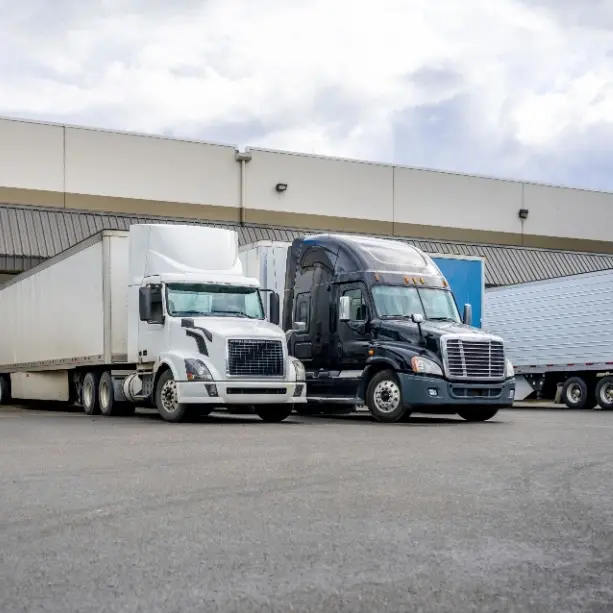Yard management is an important aspect of effective logistics operations, responsible for the intake and dispatching of critical logistics assets. The yards and sites where these operations take place are often large and busy, making it incredibly important to optimize operational processes in order to extend reliability and profitability. To consider how this works, we must break down the stages of yard management and delve into the specific strategies that can be used to optimize these operations. Further, we’ll take a look at how AI is shaping the future of logistics operations and yard management efforts.
Increase Your ROI by Investing in AirFinder Everywhere
- Loss Prevention. Reduce the amount of loss that occurs during the supply chain process
- Location Coverage. AirFinder Everywhere uses a combination of GPS, Cellular, and WiFi to determine location everywhere
- Security Alerts. Know when a delay in shipment has occurred so the problem
can be addressed immediately.
Stages of Yard Management
Yard management is a critical aspect of supply chain operations, encompassing the orchestration of vehicles, trailers, and goods within a company’s yard or distribution center. This multifaceted process can be delineated into several stages, each with its own set of challenges and optimization opportunities. These stages include:
1. Arrival and Check-In
The initial stage of yard management involves the arrival of trucks and trailers at the facility. Efficiently managing this influx requires meticulous scheduling and coordination to prevent bottlenecks and delays caused by too many trailers arriving at the same time. That being said, with such unpredictable factors as road and weather conditions at play, schedules can be and often are disrupted. This means that there will still likely be moments where there are unexpected influxes of trucks and trailers entering a yard. A streamlined check-in process, facilitated by automated systems, can significantly enhance efficiency when this occurs, ensuring that vehicles are promptly directed to their designated locations.
2. Dock Assignment
Once checked in, the next critical step is the assignment of docks for loading and unloading. This stage demands precise coordination to maximize dock utilization while minimizing wait times. Advanced algorithms can assist in dynamically allocating docks based on real-time yard conditions and priorities, ensuring optimal resource allocation. Similarly, it can schedule and assign workers based on where there is the greatest need at any given time. This helps prevent long waits where the trailer sits idle and risks getting in the way of other arrivals.
3. Loading and Unloading
The core of yard management lies in the efficient handling of goods, especially in the loading and unloading of trailers. This stage involves physically moving goods onto or off of the trailer, which must be executed swiftly to maintain a smooth flow of operations. After all, this tends to be the primary function of a logistics yard, and the measure of how effectively a trailer can be loaded or unloaded is often a measure of success and improvement for the company. Automated systems can play a pivotal role in expediting this process, reducing human error and enhancing overall productivity.
4. Yard Move and Parking
After loading or unloading, trailers must be repositioned within the yard or moved to parking areas based on where the individual trailer needs to go and what it needs to do next. What this means for each individual trailer changes depending on where it’s at in its utilization cycle at any given time, as well as how busy operations currently are. For instance, if a trailer has been on the road for an extended period of time, it might be due to be given rest time or even inspections and preventative maintenance. Another trailer might be idle for a time, so it needs to be moved to a lot that designates it as ready for active use. Another trailer still might be immediately reloaded and sent back out onto the road, especially if operations are busy. Strategically shifting trailers between phases of the utilization cycle ultimately prolongs the life of the asset and saves the company money on maintenance and replacements. Regardless of where the trailers are being taken, his stage requires precise maneuvering and tracking to ensure that trailers are readily accessible when needed. Advanced yard management systems equipped with real-time tracking capabilities can streamline these movements, minimizing unnecessary relocations and enhancing yard efficiency.
5. Departure and Check-Out
The final stage of yard management involves the departure of trucks and trailers from the facility. A well-organized check-out process, coupled with automated documentation and clearance, ensures that vehicles exit the yard promptly, reducing congestion and facilitating a seamless transition to subsequent destinations. It’s also worth establishing an automated method of checking the contents of trailers as they depart to help prevent sending the wrong cargo to the wrong location. This can be achieved by implementing an asset tracking system with geofencing capabilities that will automatically read which assets are leaving the premises at any given time, providing alerts when they don’t match up with ongoing documentation.
How to Optimize Yard Management
Optimizing yard management at every stage of the process is pivotal to driving profitability and enhancing overall supply chain efficiency. Several strategies can be employed to achieve this optimization. While your company might benefit more from different strategies depending on your size, scope, and unique challenges, the best way to optimize your yard management processes is to combine multiple or all of these strategies for the greatest possible effect.
Implementing Advanced Technology
Adopting state-of-the-art asset tracking systems like our AirFinder Everywhere can revolutionize yard operations. These systems provide real-time visibility and precise tracking of trailers, cargo, pallets, and other key logistics assets across stages, enabling better decision-making and resource allocation. By investing in an asset tracking solution that extends visibility beyond the yard, you can also use this same system to track trailers and other assets while they’re on the road, maintaining visibility across the wider logistics cycle and ensuring proper delivery and handling at all times.
Enhancing Communication
Effective communication between yard personnel, drivers, and warehouse staff is essential for smooth operations. Utilizing mobile communication tools and real-time messaging platforms can bridge communication gaps, ensuring that everyone is on the same page and reducing miscoordination. It is also important to ensure, when using asset tracking or other yard management software, that every individual involved in the process can readily access the data that the system gathers and synthesizes. This indirect form of communication ensures that everyone has the same information at their disposal and that they are making decisions together based on shared knowledge and accurate information.
Automating Routine Tasks
Automation can significantly reduce manual intervention and human error to enhance operational efficiency and effectiveness. Implementing automated check-in/check-out systems aided by geofencing technologies and utilizing asset tracking to readily locate assets when they are needed can streamline operations and minimize delays. In terms of compliance and meeting regulatory standards, these systems can also help build the reports needed for audits, as they keep a constant stream of data and an automated record of any fluctuations.
Leveraging Data Analytics
Data-driven insights are crucial for continuous improvement in logistics as a whole and yard management operations specifically. Analyzing historical data can help you recognize volume trends and identify recurring problems for your operations so that you can address and eliminate them. Real-time metrics also provide great benefit, helping to identify bottlenecks and other disruptions as they occur. This can help you quickly identify why operations are lagging on a particular day, empowering you to take action to minimize negative effects instead of needing to conduct a full investigation first. Predictive analytics based on these data pools can also forecast yard demands in the future, enabling proactive planning and resource allocation.
Training and Development
Investing in the training and development of yard personnel ensures that they are equipped with the skills and knowledge to handle complex yard operations. One area where this is particularly important is in ensuring that your personnel knows how to use the technology solutions implemented in the yard to the best of their ability. As already indicated, asset tracking solutions and other systems are incredibly useful for optimizing yard management; however, they are only effective when people know how to use them. It’s important to provide training for employees in these matters, as it will help you see better results from your implementation and dispel any misgivings about the new technology. Regular training sessions and workshops also have the added benefit of fostering a culture of continuous improvement and innovation.
How AI Can Help You Improve Yard Management in the Future
Beyond asset tracking technology and standard yard management systems, other technologies are beginning to make a name for themselves in yard management optimization efforts. One such technology is artificial intelligence (AI), which holds the potential to drive unprecedented levels of efficiency, accuracy, and profitability. While AI might not necessarily be viable for your operations right now due to its lingering inaccuracies and high cost, as this technology becomes more accurate and affordable, it will become a game-changer across industries. And you can prepare for that future now with the asset tracking and other supply chain solutions you’re already investing in. Since AI needs a strong pool of data in order to be effective, you can use these mainstream systems to collect data now so that when AI becomes a viable option in the future, you already have the data you need to get the most out of implementation.
AI has the potential to shape the future of yard management in a number of ways. For instance, AI-powered predictive maintenance can anticipate equipment failures and maintenance needs with increased accuracy, minimizing downtime and reducing the frequency of equipment failures. AI algorithms can also continuously analyze real-time data to provide suggestions on how to optimize yard operations dynamically. This includes adjusting dock assignments, scheduling trailer movements, and predicting loading/unloading times based on current yard conditions rather than projected conditions, responding directly to real-time disruptions. Even at a broader level, AI can provide a multitude of actionable insights and recommendations to yard managers, enabling them to make informed decisions. By analyzing vast amounts of data, AI can identify patterns, predict future trends, and suggest optimal courses of action to maximize yard efficiency. Essentially, it can get you the results you’re already looking for faster and with less need for constant deliberation.
Start Optimizing Your Yard Management Today
Optimizing yard management is crucial for driving profitability and enhancing supply chain efficiency at every stage of the process. By embracing advanced technology, fostering effective communication, and leveraging the transformative power of AI, companies can future-proof their yard operations, ensuring sustained success in an increasingly competitive landscape. By investing in asset tracking technology and mastering data collection now, you even have the potential for achieving added benefits by implementing AI in the future. To learn more about our AirFinder Everywhere solution and how it can be used to optimize your yard management and logistics operations, book a demo with our team of experts today!

Publisher: Source link











